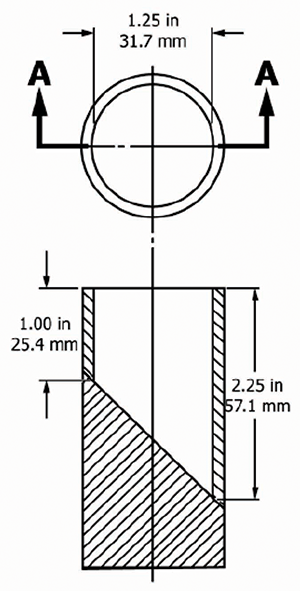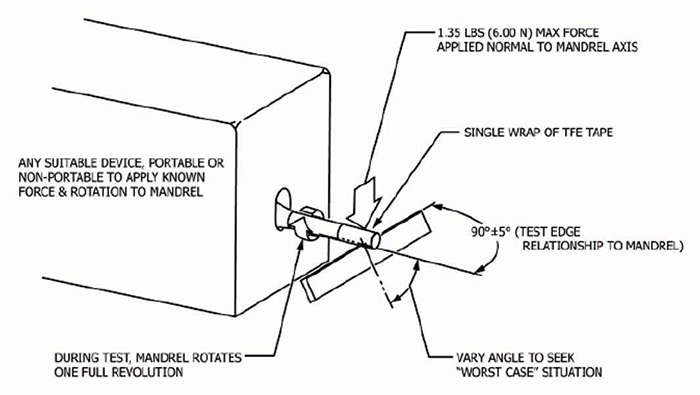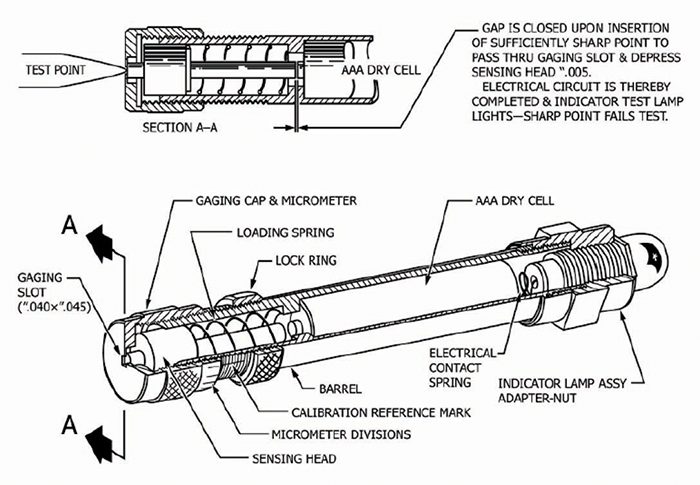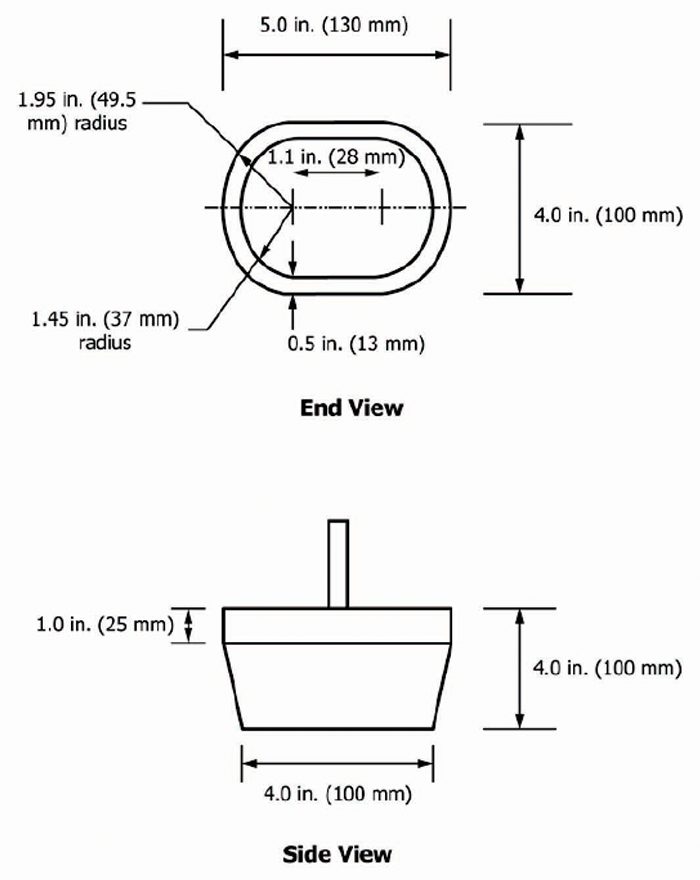Going Beyond the Standard Specific to Your Equipment
Editor’s Note: The paper on which this article is based was originally presented at the 2018 IEEE International Symposium on Product Safety Engineering in San Jose, CA. It is reprinted here with the gracious permission of the IEEE. Copyright 2020 IEEE.
You have designed your product and need to go through the testing, declarations and certifications to market it in your target countries and regions. You look through the harmonized standards in the Official Journal of the European Union that the Low Voltage Directive 2014/35/EU [1] calls out for presumption of conformity. You also contact safety agencies in other countries and regions where your product will be sold and get determinations of required standards and certifications.
Is it enough? Most likely it is not. Technology and entertainment products are pervasive in the home and, while parents are expected to protect their child, supervision may not always prevent or minimize significant injury. In today’s litigious society, you have done the bare minimum if you have followed the steps in the previous paragraph. Plaintiff’s attorneys will be more than glad to point out that you did the minimum required.
Designers and compliance engineers must do their due diligence and look beyond the base standards and minimum requirements. This paper will not give you every possible scenario to consider in the design and use of your product, but it is the author’s intention to get you to think “outside the box” of the minimum requirements with some basic due diligence and risk assessment methodologies.
Options for Due Diligence
Let us take the example of a consumer electronics product or piece of information technology equipment intended for use by the average consumer in their home. A remote control, keyboard, mouse or similar product or accessory may be within easy reach of a child and, in fact, may be commonly used by children. Applicable safety standards like IEC 60065, IEC 60950 or IEC 62368, while not always excluding children, do not take into consideration the additional precautions that may be necessary for products used by or around children.
IEC 62368-1 in fact states:
“This part of IEC 62328 specifies safeguards for ordinary persons, instructed persons, and skilled persons. Additional requirements may apply for equipment that is clearly designed or intended for use by children or specifically attractive to children [emphasis added].”[2]
While you may not have designed or intended your product for use by children, is it attractive to them or likely to be around or used by them?
Some standards, such as the household appliance safety standard series IEC 60335, do deal with the common hazards presented by appliances that are encountered by all persons in and around the home. However, IEC 60335 in general does not take into account children whose physical, sensory or mental capabilities, or lack of experience and knowledge prevents them from using the appliance safely without supervision or instruction.[3] Therefore, very young children who may not know how to properly use the appliance are not in scope. It also does not take into account children playing with the appliance.
So if the base standard is essentially warning that the product may not be safe around children after meeting all the requirements in that standard, what are your options?
A good option in this case would be to look at the toy safety standards that already exist and examine the product using a risk assessment approach. It would not necessarily require getting a certification or doing a declaration to toy safety directives or standards. Documenting any assessment and testing against these standards and conducting and documenting a risk assessment could show due diligence and, most importantly, release a safer product.
Some good basic guidance can be found in the following standards:
- ISO/IEC Guide 51 is applicable to any safety aspect related to people, property, or the environment, or a combination of one or more of these, and adopts a risk reduction approach.
- ISO/IEC Guide 50 provides a framework for preventing hazards to children from the products and services that they use.
While this paper will concentrate on the safety of children in the examples, we must also consider whether senior citizens or persons with a disability may be injured by a product. ISO/IEC Guide 71 provides a systematic approach to addressing ageing and disability issues related to the safety of products.
The next sections will discuss some considerations to take when designing products that may be used by or around children.
Safety of Toys
In the United States, the Consumer Product Safety Commission (CPSC) is charged with protecting the public from unreasonable risks of injury or death. The CPSC uses the federal toy safety standard, ASTM F963-11[4] to protect children aged 12 and under. ASTM F963 is a comprehensive standard that addresses many hazards related to toys. Besides physical and mechanical properties, the standard also addresses limits for substances that are toxic, corrosive, an irritant, sensitizer or pressure generating, and radioactive, flammable and combustible materials.
In Europe, the EN71 series of standards covers toy safety. EN71-1[5], toy safety mechanical and physical properties, addresses products designed for or intended for use by children less than 14 years old. It takes into account foreseeable and normal use bearing in mind the behavior of children.
The age grading varies slightly by standard, product, or material, but requirements are broken down, in general, into the age groups of 0 to 18 months, 18 to 36 months, 3 to 8 years, and 8 to 14 years of age. There are often more granular breakdowns in some standards. A good age determination guide is available from the CPSC.[6] Broadly speaking, children under 3 must be protected from small parts. Children age 8 and above are generally viewed as being able to understand warnings and proper use.
The physical and mechanical requirements that would be most applicable for the example used in this paper of a remote control, keyboard, or mouse are outlined below. Requirements in ASTM F963-16 and EN71‑1:2014 are similar for the topics described below.
Abuse
A toy item is checked before and after abuse testing to see if any parts or pieces that break off the item fail for small part hazards or sharp edges or parts. The tests are designed to simulate exposure to mechanical damage from being dropped, thrown or other action reasonably expected to be performed by a child. Abuse consists of drops, torque, tension, compression and flexure testing.
Abuse testing in ASTM F963 varies based on the intended age category, whereas EN71-1 has one set of criteria. The author recommends using the worst-case abuse criteria for each type of test or custom set of criteria particular to your product or expected user environment, with documented justification.
Small Parts
Small objects can present hazards such as choking, ingestion or inhalation, particularly for children under 36 months of age. A part is considered a hazard by the safety standards if it will fit in the Small Parts Cylinder shown in Figure 1. For perspective, a AAA battery will fit into the cylinder but an AA battery will not. Therefore, a AAA battery would be considered a choke hazard but an AA would not.
Small components, flakes or chips that may come off the product during abuse testing should be placed in the cylinder to determine if they are a potential hazard.

Accessible Edges, Projections, and Points
The product must not have accessible potentially hazardous sharp edges before or after abuse testing. Potentially hazardous edges are tested using the Sharp Edge Test Apparatus shown in Figure 2.

Accessible metal edges, including holes and slots, must be free from hazardous burrs and sharp edges. They must be finished or covered. Accessible plastic edges, corners, or mold parting edges must be free from burrs and flash or protected so that hazardous edges are not exposed. Any exposed screws, bolts, threads, etc. must also be free from exposed hazardous sharp edges and burrs.
Hazardous projections or protruding parts must not be present on the product to minimize potential puncture hazards to the skin should a child fall on the product. The product must meet this requirement before and after abuse testing. There are no objective means given for determining if a projection is hazardous, only that, if a projection appears to present a potential skin puncture hazard, it be protected or smoothed.
The product must not have accessible potentially hazardous sharp points before or after abuse testing. Examples include exposed screws, burrs, ends of wires or springs, pins and staples. Potentially hazardous sharp points are testing using the Sharp Point Tester in Figure 3.

Folding Mechanisms and Hinges
Products must not allow the possibility of crushing, laceration or pinching hazards that might occur in folding mechanisms like hinges. A locking mechanism or designed-in hinge-line clearance can be used to mitigate the hazard.
Cords and Straps
The product must not allow the potential entanglement and strangulation hazards that may be caused by accessible cords, straps and elastics before or after abuse testing. If cords, straps or elastics or multiple cords/straps/elastics on the product can form a loop in connection with any part of the product, the loop must not permit the passage of the head of a child. The Head Probe is shown in Figure 4.

Batteries
According to a report of data collected by the U.S. CPSC from the NEISS and other databases for injuries from batteries among children aged <13 years in the U.S. from 1995-2010[7], nearly three quarters of the injuries involved children ≤4 years. Button batteries (coin cells), especially those >20 mm in diameter were by far of most concern because they can lodge in the esophagus, leading to serious complications or death. One of the main injury mechanisms is serious esophageal burns due to moist tissue completing a circuit for the battery to produce current that can result in permanent or deadly injury in as little as two hours.
AAA batteries and other larger cylindrical batteries were not implicated in any deaths in the report. AAA batteries are not a high risk for choking and other injuries according to available literature. They still must be treated as small parts because they fit in the choke cup, but you may decide to address them with a warning in the user instructions if your risk assessment permits that control measure.
ISO/IEC Guide 112 provides guidance on the use of coin cell batteries. Product designers must reduce the likelihood that children will be able to access batteries, particularly button cell types.
Magnets
Ingestion of magnets by children can cause serious injuries to the intestinal system. Multiple magnets, or a magnet and piece of metal, can trap loops of the bowel and cause perforations or obstructions. Products that use magnets for closures, speakers or other functions must be designed to limit the likelihood that a magnet small enough to fit in the Small Parts Cylinder could be removed or broken free from the product to prevent possible ingestion by a child.
Substances
For substance restrictions, ASTM F963 has limits for eight heavy metals that vary depending on the metal type. Additionally, six types of phthalates are currently banned for use in children’s toys and certain childcare articles according to the Consumer Product Safety Improvement Act of 2008[9]. There are also additional state requirements, including California’s Prop 65.
EN71-3[10] contains requirements for limiting heavy metals to minimize children’s exposure to certain potentially toxic elements. The standard limits 19 metals from toy materials and parts of toys. The limits vary based on the metal type and material application. The EU Toy Safety Directive 2009/48/EC[11] has additional restrictions for substances classified as carcinogenic, mutagenic, or toxic for reproduction (CMRs). Additionally, you must comply with the EU’s REACH restrictions as well.
Refer to the paper titled “Hazardous substance restrictions: And why they are restricted” [12] and referenced standards for more details on substance restrictions for toys.
Risk Assessments
A risk assessment can be an important intervention tool to reduce injuries. ISO 10377, Consumer product safety – Guidelines for suppliers, is an example of an international standard that can give guidance in the designing of a safe product beyond meeting the base safety standard for the product category.
The entire life cycle of the product must be considered. What is the product’s life expectancy? What is the intended use and foreseeable misuse? Who will be exposed to the product and what are the potential hazards for each type of person exposed?
Most product designers usually have a good understanding of the product’s intended uses and users; however, the product designer must also seek the knowledge of how the product may be either misused or used by those that the designer had not intended. These users could be children or other vulnerable persons. Sources of this knowledge can be feedback from consumers of existing similar products, such as failure reports, consumer complaints, returns and lawsuits. This may be institutional knowledge or industry knowledge for a particular product type.
There are many standards, papers, articles and presentations on risk assessments. One such good example is ISO 10377 Section 5.3, Safety considerations in design, and Annex C, Hazard and risk evaluation.
Conclusion
Base safety standards for home appliance and consumer electronics products limit injuries to persons under a limited set of criteria. Product designers and compliance engineers must look beyond the base standard and commit to providing safer products. Consumers benefit from a safer product. The benefits to the company can include reduced risk of needing to recall the product and avoiding lawsuits and negative company image. Think outside the box and reasonably address potential risks to your consumers and their families.
References
- “Directive 2014/35/EU of the European Parliament and of the Council of 26 February 2014 on the harmonisation of the laws of the Member States relating to the making available on the market of electrical equipment designed for use within certain voltage limits (recast). Applicable from 20 April 2016”. OJ L 96, 29 March 2014.
- Audio/video, information and communication technology equipment – Part 1: Safety requirements, IEC 62368-1 Edition 2.0 2014-02.
- Household and similar electrical appliances – Safety – Part 1: General Requirements, IEC Std. 60335-1 Edition 5.1 2013-12.
- Standard Consumer Safety Specification for Toy Safety, ASTM F963- 11.
- Safety of toys – Part 1: Mechanical and physical properties, EN71- 1:2014.
- Age Determination Guidelines: Relating Children’s Ages to Toy Characteristics and Play Behavior, US Consumer Product Safety Commission, September 2002.
- “Injuries from Batteries Among Children Aged <13 Years – United States, 1995–2010” viewed 12-Jan-2018.
- Robinson, Paul, “Child Safety – Button or Coin Batteries” presentation, 2015 IEEE Symposium on Product Compliance Engineering, 18-20 May 2015, Chicago, IL, USA
- “Consumer Product Safety Improvement Act of 2008 (CPSIA)”, Pub. L. No. 110-314, 122 Stat. 3016, 14-August-2008 amended by Public Law No. 112-28, 12-August-2011.
- Safety of toys – Part 3: Migration of certain elements, EN71-3:2013.
- “Directive 2009/48/EC of the European Parliament and of the Council of 18 June 2009 on the safety of toys”, OJ L 170, 30.6.2009, p.1.
- Roman, Harvey, Hutchison, “Hazardous substance restrictions: And why they are restricted,” 2017 IEEE Symposium on Product Compliance Engineering, 8-10 May 2017, San Jose, CA, USA.
- Consumer product safety — Guidelines for suppliers, ISO 10377:2013.
- Safety aspects — Guidelines for their inclusion in standards, ISO/IEC Guide 51:2014.
- Safety aspects — Guidelines for child safety in standards and other specifications, ISO/IEC Guide 50:2014.
- Guide for addressing accessibility in standards, ISO/IEC Guide 71:2014.
- Guide on the safety of multimedia equipment, ISO/IEC Guide 112:2017.
- Audio, video and similar electronic apparatus—Safety requirements, IEC 60065:2014.
- Information technology equipment—Safety—Part 1: General requirements, IEC 60950-1:2005.
- Roman, Dan, “Introduction to IEC 60335 — Household and similar electrical appliances — Safety”, 2015 IEEE Symposium on Product Compliance Engineering, 18-20 May 2015, Chicago, IL, USA.
- S. L. Mak; H. K. Lau, “An enhanced safety assessment model for toy products”, 2013 IEEE Symposium on Product Compliance Engineering (ISPCE), 7-9 Oct. 2013, Austin, TX, USA.
